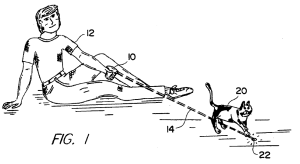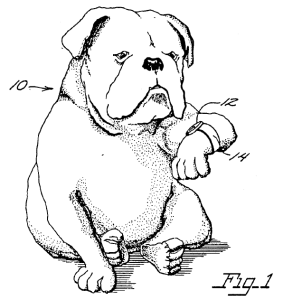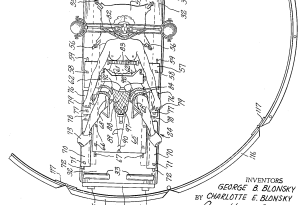This post gives an overview of LegalZoom’s patent-related services and shows you why it’s NOT a great idea to use LegalZoom to file a patent application.
An Overview of LegalZoom Patent Services
 LegalZoom offers provisional and non-provisional utility patent applications, starting at $199 and $2,400 respectively, plus government filing fees. For the provisional application, LegalZoom says that you simply “answer a few questions and we’ll complete and file your Provisional Application with the USPTO.” For the non-provisional application a “patent attorney or agent will prepare up to two drafts of your utility patent application (including up to 5 pages of specifications, 10 claims, abstract and information disclosure statement.)”
LegalZoom offers provisional and non-provisional utility patent applications, starting at $199 and $2,400 respectively, plus government filing fees. For the provisional application, LegalZoom says that you simply “answer a few questions and we’ll complete and file your Provisional Application with the USPTO.” For the non-provisional application a “patent attorney or agent will prepare up to two drafts of your utility patent application (including up to 5 pages of specifications, 10 claims, abstract and information disclosure statement.)”
A full discussion of provisional vs. non-provisional applications is outside the scope of this post, but the basic gist is that provisional applications are temporary placeholders that expire at the end of one year, at which time, a non-provisional utility application must be filed. Unlike, the provisional application, the non-provisional utility application goes through a substantive examination process and can mature into an issued patent. Applicants can start the patent process with a provisional patent application or can skip ahead and file the non-provisional application first. Both applications give “patent pending” status.
So What’s Wrong With The LegalZoom Service?
The problem with these LegalZoom patent services is that they lure inventors into believing that they can get solid patent protection for cheap. In fact, the sad reality is that patent applications drafted this way offer effectively no patent protection and have little chance of withstanding the examination process. Plus, the nature of the patent system makes it such that inventors won’t know this until it’s too late and their patent rights are irrevocably lost.
For example, for provisional patent applications, the USPTO will accept any document filed and give it a filing date and application number. However, what LegalZoom fails to make clear is that you only truly get priority for inventions that are disclosed in adequate detail in the application and that a short questionnaire cannot possibly yield sufficient detail that actually gives suitable protection to an invention. Unfortunately, because they are not substantively examined by the USPTO, worthless provisional patent applications give inventors a false sense of security because they get the same filing receipt and “patent pending” status that a legitimate application would.
[Get free sample excerpts of Patents Demystified book here]
The LegalZoom non-provisional utility patent application is similarly flawed. As with the provisional application, priority to an invention is based on adequate description of it, and the “up to 5 pages of specifications” promised by LegalZoom (which presumably includes drawings), is not sufficient to adequately describe a given invention aside from the most simple mechanical device. Unlike provisionals, which are not examined at all, non-provisional utility patent applications must comply with strict formatting requirements at filing and then must survive the scrutiny of substantive examination 1-3 years later.
Unfortunately, the specification and drawings are essentially set in stone at the time of filing and updating or adding new details to the application is not allowed after filing. Accordingly, once the application is filed and passes an initial review, it therefore takes 1-3 years before terminal defects in the application become apparent and it’s then impossible to add the important details that were left out at filing. In other words, a worthless non-provisional utility application can still conform with the basic filing requirements and receive a filing date and application number, which provides a false sense of security until it fails to issue as a patent 1-3 years later.
Sounds Bad, But I’ll Either Sell My Company or Have Investors On Board Before These Problems Are Discovered
Unfortunately, savvy investors and business collaborators and can easily spot bad patent applications, and the due-diligence process that establishes a relationship with such parties involves a thorough review of any patent assets. In fact, in any deal where I’m performing due diligence on a company’s patent assets, the first thing I look for is a sign that patent applications were drafted by the inventors themselves or by a cut-rate service. Having questionable patent assets almost always preempts a relationship, or at the very least, justifies a deep discount in any resulting deal.
So, if LegalZoom is No Good, How Should I Get My Patent Applications Drafted and Filed?
The best thing that inventors can do is to find a trusted patent attorney that can craft a custom patent strategy that maximizes patent protection within a reasonable budget based on the unique business goals associated with a given invention or product.
 Patent value compared to patent cost is generally an S-curve as illustrated on the left. Value and protection remains limited at low cost until a threshold is reached where any added cost gives large gains. On the other hand at high cost, value and protection does increase, but at a slower and decreasing rate.
Patent value compared to patent cost is generally an S-curve as illustrated on the left. Value and protection remains limited at low cost until a threshold is reached where any added cost gives large gains. On the other hand at high cost, value and protection does increase, but at a slower and decreasing rate.
LegalZoom is on the low end of the spectrum, where you get little value at a low cost. Accordingly, cheap one-size-fits all patent services seem to save money, but end up being costly because they leave inventions under-protected or allow patent rights to be unknowingly forfeited.
The key is to find a trusted patent attorney that can collaboratively identify the cost range that provides the most value for the money based on the invention and specific business goals. Yes, not everyone can ultimately afford a patent application within this ideal range, but everyone should be aware of the consequences of under-spending on patent protection.
You might also like:
Are Ideas Patentable? Is Your Idea Patentable? |
Is Software Patentable? |
Top Three Patent Myths |
 |
Want insider’s guide to the patent process for entrepreneurs, startups and inventors?Learn how successful companies protect their ideas and inventions. Official patent guide of the American Bar Association and #1 Amazon best seller in patent books. Used at top universities including Harvard and Stanford. (Free excerpts here)Get Patents Demystified for
|











